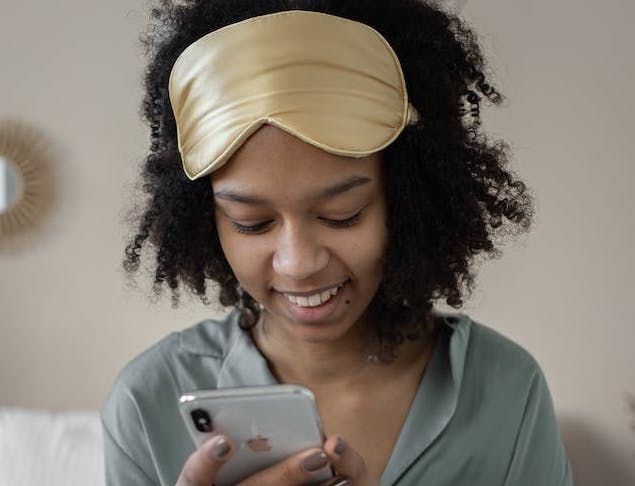Headaches and migraines seem to plague most of us at one time or another. Migraines are among the most common type of headaches, with nearly 30 million Americans suffering from migraines regularly.
Headaches are a nuisance that can occur at any time, but a large portion of people may find that they wake up with a headache first thing in the morning.
If you find yourself waking up with a headache each morning, rest assured that there is a solution out there to provide that much-needed relief.
Learning how to put an end to morning headaches depends on understanding what causes them to begin with.
To start, jaw disorders such as TMJ may be to blame.
Rule Out TMJ Disorder and Teeth Grinding
The jaw joint, known as the temporomandibular joint, acts as a hinge that connects the jawbone to the skull.
TMJ disorders consist of pain, compromised movement, and discomfort of this joint. This typically causes challenges when chewing, and the jaw may click or lock.

If left untreated, the pain associated with TMJ disorders can cause morning headaches. Oftentimes, TMJ leads to nighttime teeth grinding, or bruxism.
When you grind your teeth as you sleep, pain in and around the jaw worsens, causing headache pain, tooth sensitivity, and soreness.
Your dentist can determine if you’re suffering from nighttime grinding and TMJ. Common treatments for TMJ headaches include:
- Physical therapy
- Dental procedures/oral surgery
- Bite guards
- Medication
Aside from nighttime teeth grinding and TMJ, another common contributor to morning headaches is the quality of your diet.
Assess Your Diet
Believe it or not, a hidden food allergy or sensitivity could be the cause of your headaches. Certain foods have been shown to potentially trigger headaches, including:
- Chocolate
- Caffeine
- Garlic and onions
- Artificial sweeteners
- Cured meat
- Canned soups
- Nitrates
- Cultured dairy products, such as sour cream or yogurt
- Certain aged cheeses, such as feta, muenster, or brie
- Alcohol
- Certain nuts and seeds or nut butter, like peanut butter
- Picked foods
- Beans
- Avocados
- Dried fruits, like raisins or figs
Aside from food sensitivities, dehydration and blood sugar fluctuations caused by certain foods are often to blame. For example, if you consume caffeine or alcohol regularly, you may be more dehydrated than the average person.

Caffeine withdrawal can lead to chronic headaches, as it stimulates the brain and helps you feel alert and energized. Once it enters the bloodstream, it raises feel-good dopamine levels.
Over time, caffeine use may rise to achieve the same effect. Without it, the small withdrawal caused by caffeine dependency may cause fatigue, headaches, irritability, and nausea.
If you suspect a food allergy or consume alcohol and caffeine regularly, check for any sensitivities and lower your consumption of headache-inducing foods and drinks.
Try increasing your water consumption to half of your body weight in ounces to ensure proper hydration and eat a balanced diet that includes adequate protein and vegetables.

If you always wake up with a dry mouth and headache, stress and anxiety are also potential contributors.
Decrease Stress and Treat Anxiety
Stress and anxiety lead to many physical symptoms that you may not necessarily connect to feeling overwhelmed. Digestive issues, muscle tension, rapid heart rate, and increased breathing rate are all associated with feeling anxious.
Dizziness, shaking, and headache are also physical symptoms of being stressed.
Lower stress levels with physical activity, mindfulness, and breathing exercises, such as box breathing.
To practice box breathing, inhale for four seconds, hold your breath for four seconds, exhale for four seconds, hold your breath for four seconds, and repeat.
@somnifix Morning #breathwork can improve your day! ☀️ #boxbreathing #morningroutine #jamesnestor #DidYouKnow ♬ Formula - Labrinth
If you suffer from extreme anxiety, seek tools such as therapy and/or medication to relieve both physical and mental symptoms.
We’ve covered changes you can make during waking hours to prevent morning headaches, but what about changes you can make to your sleep patterns or routine?
Get Tested for Sleep Disorders
If your sleep-wake rhythms are out of whack, you’ll experience insufficient sleep. As a result, you’ll wake up with dreaded head pain.
Circadian rhythm disorders affect around three percent of the population, while general sleep disorders affect even more people. Research suggests that 50 to 70 million US adults suffer from at least one sleep disorder.
Obstructive sleep apnea, also called OSA, is a condition that causes temporary pauses in breathing throughout the night. These breathing pauses are caused by blockages in the airway, resulting in reduced sleep quality.
Poor breathing quality and sleep associated with sleep apnea are huge contributors to morning headaches.

A sleep study is required to diagnose sleep apnea. If you are found to have it, many treatment options are available, including a Continuous Positive Airway Pressure (CPAP) machine that keeps the airway from collapsing as you rest.
Obstructed breathing also leads to snoring, which is commonly caused by open-mouth breathing during rest.
Stop Mouth Breathing and Snoring at Night
Not everyone who snores has sleep apnea, but almost everyone who suffers from sleep apnea snores. And snoring and morning headaches are closely related.
Of frequent snorers, studies show that around 23 percent wake up with headaches in the morning.

Mouth breathing is a major contributing cause to both snoring and dry mouth. As you breathe through your mouth during sleep, the tissues and muscles in and around the airway fall backward.
These tissues block the airway and vibrate together. Enter: the sound of snoring.
If you want to put a stop to always waking up with a dry mouth and headache in the morning, you have to stop mouth breathing during sleep.
But how do you stop doing something in your sleep? You prepare for it prior to going to bed. That’s where the power of mouth taping comes in.
Always Waking Up With Dry Mouth and Headache? Stop it With SomniFix
If you want to stop mouth breathing and prevent morning headaches, you have to nasal breathe during sleep.
Mouth tape makes this possible, while SomniFix makes it comfortable.
Our Mouth Strips are just like a second skin. Moreover, our strips are hypoallergenic, so you won’t experience any irritation or discomfort.
Simply place one of our strips over your lips before turning in for the night. As a result, you’ll experience snore-free sleep and wake up feeling refreshed and renewed.

The best part? You’ll say goodbye to always waking up with dry mouth or headaches! And even better yet, you can wear mouth tape in combination with your CPAP mask if you have sleep apnea.
Start taping your way toward restful, headache-free sleep tonight!



